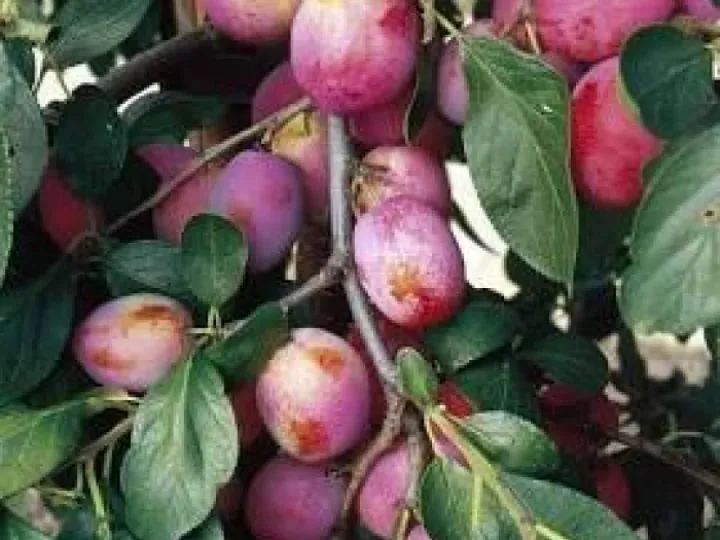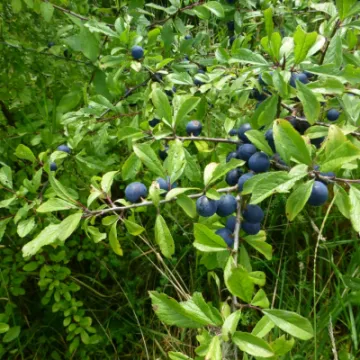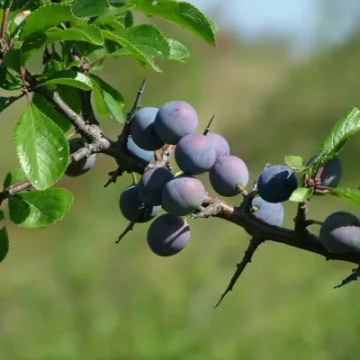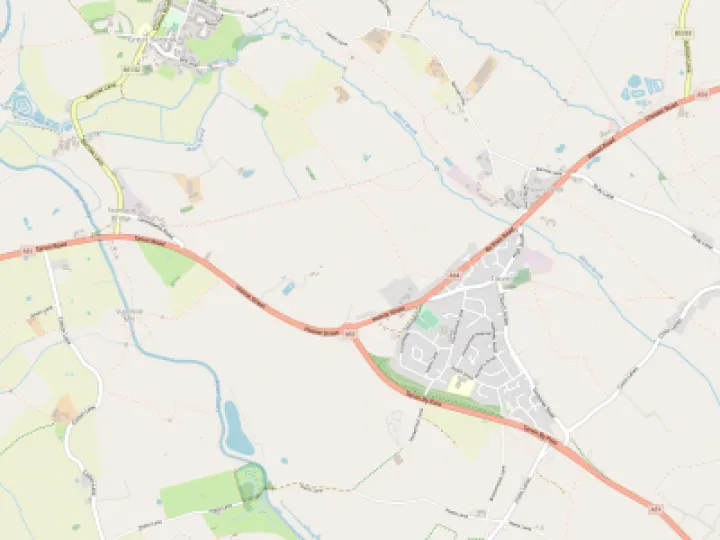Tarvin Community Woodland -Damsons and Sloes.
Victoria Plum (Prunus domestica 'Victoria'), Cheshire Damson (Prunus domestica) & Blackthorn (Prunus spinosa)
One of the 'developments' that have occurred over the past few years is that the more-open 'glade' in the section of the woodland behind Crossfields has had a partial change of function and the bequest of a new name. The large, open area, so ideally suited to the annual "Apple Pressing Day", has had a number of fruit trees planted around its' edges. For the most part, these are Cheshire varieties of apple trees, and this has led to the new name – that area is now referred to as "The Orchard in Tarvin Community Woodland".
In the orchard and in the hedges round about can be found three closely-related trees, all of which are members of the family 'Prunus'. If the name reminds you of 'prunes', then that is not accidental – the fruit of all of these trees, when dried, could be called prunes, although some would make better eating than others!
Firstly, and most noticeable, growing amongst other fruit trees out in the open 'glade', there is a 'Victoria' Plum tree (Prunus domestica 'Victoria'). This is one of the best-known plum trees and is a favourite amongst garden fruit trees. Like all of the trees in the Genus Prunus, (including apricots, peaches, plums and cherries), the fruit is described as a stone fruit (or its technical synonym, a Drupe). The very hard, "lignified" stone (sometimes referred to as the "pit") is derived from the ovary wall of the original flower, while around it grows soft and sweet flesh that is very attractive to animals and birds. The stone is resistant to digestion if consumed by creatures that have eaten the whole fruit in order to be nourished by the sweet, fleshy and succulent outer tissue. In our family, very few Victoria plums are used in cooking – most are consumed as a luscious fruit soon after picking (although we tend not to swallow the stone!)
There are two other members of the family Prunus growing in the woodland – but they are in the hedgerows near to the orchard. The most closely related is another Prunus domestica – but this time it is the one from which all others are descended. It was originally referred to as the Damascene (or Damascus) Plum – but a long time ago the name was shortened to Damson. The damson is popular for cooking and it seems likely that the damson (the original Prunus domestica) was the original parent from which all of the many types of cultivated plums (such as the Victoria) have been bred. The popularity of damson trees around farms in Cheshire has led to the development of a local population that has been given the name "Cheshire Damsons" and it is from this local population that our hedgerow trees have come.
Finally we come to the third type of Prunus – Prunus spinosa. Here we have the tree that was very probably the original parent of the damson. The most obvious characteristic is not the fruit at all but instead the long, vicious thorns or spines that have resulted in the English name Blackthorn and the Latin Prunus spinosa. The spines are so hard and thin that they were used as needles by stone-age people and Blackthorn bushes will make an excellent stock-proof fence. In amongst the leaves in Autumn are small fruits that resemble tiny damsons and are called Sloes. They are very thin-fleshed and have a very strongly astringent flavour, so they are little-used for cooking. However, they are popular in some quarters as a flavouring for Gin.
Three related plants – all seemingly so different. Isn't Nature wonderful in its diversity? Have a look for all three while you are in the woodland and see if you can spot family resemblances!
Quick Links
Get In Touch
TarvinOnline is powered by our active community.
Please send us your news and views.










